Unveiling Riyue Mountain: A Hidden Gem for Nature Lovers and Adventure Seekers
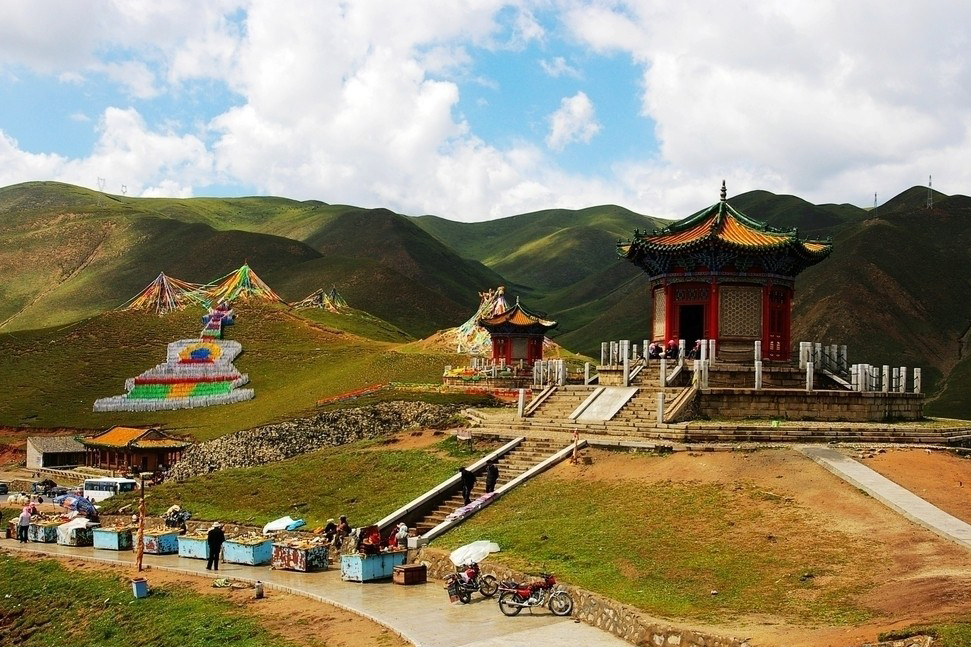
An Essential Guide to Visiting Riyue_Mountain
Nestled between the vibrant city of Xining and the breathtaking expanse of Qinghai Lake, the Riyue Mountains, also known as the Sun and Moon Mountains, offer an enchanting escape into nature’s beauty and rich history. This majestic mountain range is steeped in legend, including the captivating tale of Princess Wencheng from the Tang Dynasty, who is said to have broken her beloved stone mirror here, creating the two peaks that symbolize the sun and moon.
As you ascend the slopes of Riyue Mountain, prepare to be mesmerized by panoramic views that stretch across the vast landscapes of Qinghai—an area famed for its stunning lakes, lush grasslands, and unique geological formations. The mountains are home to two iconic structures, the Ri Pavilion and Yue Pavilion, which provide perfect vantage points for capturing the breathtaking scenery and the dynamic play of sunlight across the rugged terrain.
Whether you’re a seasoned hiker ready to tackle the trails or a casual traveler seeking serene vistas, Riyue Mountain promises an unforgettable experience. With its diverse ecosystems, rich cultural heritage, and awe-inspiring landscapes, this destination is not just a stop on your journey but a highlight of your adventure in China’s magical Qinghai province.
In This Guide
- An Essential Guide to Visiting Riyue_Mountain
- The Rich History and Legends of Riyue_Mountain
- Main Highlights: What You Absolutely Can’t Miss
- Planning Your Visit: A Practical Guide
- Tickets: Prices, Booking, and Tips
- How to Get There: A Complete Transportation Guide
- Local Cuisine and Accommodation Nearby
- Frequently Asked Questions
- Final Thoughts on Your Trip
The Rich History and Legends of Riyue_Mountain
Nestled between the bustling city of Xining and the serene expanse of Qinghai Lake, the Riyue Mountain, also known as the Sun and Moon Mountains, is steeped in captivating legends and rich history. This majestic mountain range, with its twin peaks symbolizing the sun and the moon, has long been a significant landmark for travelers and locals alike.
The tale of Riyue Mountain is intrinsically linked to the famous Tang Dynasty princess, Wencheng. As she embarked on her journey to Tibet, a tragic event unfolded at this very location. According to legend, Princess Wencheng shattered her cherished stone mirror, a precious artifact that reflected her beauty and spirit. The mirror, split into two pieces, transformed into the sun and the moon, giving rise to the iconic peaks of the Riyue Mountain. This poignant story is not just a reflection of love and loss; it symbolizes the connection between the earth and the cosmic realm, infusing the mountain with an aura of mystique and reverence.
Visitors to Riyue Mountain today can explore the scenic beauty that surrounds these legendary peaks. On either side of the mountains stand the Ri Pavilion and the Yue Pavilion, two distinctive structures that offer breathtaking views of the landscape and serve as a reminder of the mountain’s storied past. The pavilions are popular spots for both photography and quiet contemplation, allowing travelers to soak in the serene atmosphere while reflecting on the rich cultural tapestry woven into this area.
The mountains themselves are not only a natural wonder but also a historical crossroads. They have served as a guide for numerous caravans along the ancient trade routes, including the Silk Road, which connected China to the west. This vital passage facilitated the exchange of goods, culture, and ideas, making Riyue Mountain a silent witness to the ebb and flow of history.
As you stand at its summit, the sweeping vistas that unfold before you are a testament to the enduring beauty of this region. The blend of breathtaking landscapes and the echoes of historical events create an experience that is both humbling and inspiring. Whether you’re a history buff, a nature enthusiast, or simply in search of tranquility, the Riyue Mountain offers a unique journey through time and a chance to connect with the legends that have shaped this extraordinary place.
In essence, a visit to Riyue Mountain is not merely an exploration of its physical beauty; it is an immersion into the heart of Chinese history and mythology. The tales of Princess Wencheng and the ancient travelers remind us that every mountain has a story to tell, and Riyue Mountain is no exception.
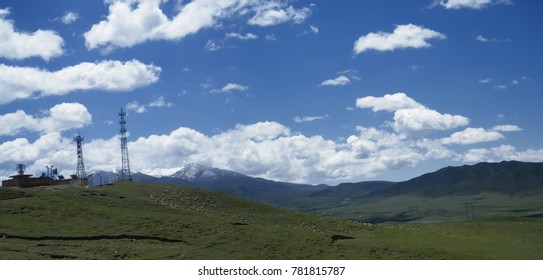
Riyue_Mountain.
Main Highlights: What You Absolutely Can’t Miss
Riyue Mountain, known as the Sun and Moon Mountains, is a breathtaking destination that promises a blend of natural beauty and rich history. Nestled between the vibrant city of Xining and the stunning Qinghai Lake, this majestic mountain range is steeped in legend and offers travelers unforgettable experiences. Here are the main highlights that you absolutely cannot miss during your visit.
1. The Legend of Princess Wencheng
Begin your adventure by soaking in the captivating lore surrounding Riyue Mountain. According to local legend, this majestic landscape was formed when Princess Wencheng of the Tang Dynasty broke her beloved stone mirror here, which split into two – the sun and the moon. Exploring this narrative adds a layer of depth to your visit, allowing you to appreciate the mountains not just for their beauty, but for their historical significance.
2. Ri Pavilion and Yue Pavilion
As you ascend the mountain, make sure to visit the iconic Ri Pavilion and Yue Pavilion. These two landmark structures are strategically placed on the mountain peaks, offering panoramic views of the surrounding landscape. The pavilions are perfect spots for photography and reflection, providing a moment to pause and take in the vastness of the plateau. The sights from these pavilions, especially at sunrise or sunset, are simply magical.
3. Breathtaking Scenery
The natural beauty of Riyue Mountain is unparalleled. The rugged peaks, lush valleys, and expansive skies create a stunning backdrop for hiking and photography. Be sure to bring your camera to capture the snow-capped mountains and the vibrant wildflowers that bloom in the spring and summer. The contrast between the rocky terrain and the clear blue sky makes for some of the most scenic landscapes in Qinghai.
4. Hiking Trails
For those who love the outdoors, the hiking trails around Riyue Mountain are a must-explore. The trails vary in difficulty, catering to both novice hikers and seasoned adventurers. As you trek through the diverse terrain, you’ll encounter unique flora and fauna, along with awe-inspiring views at every turn. Don’t forget to pack water and snacks to keep your energy up as you immerse yourself in nature.
5. Cultural Insights
Riyue Mountain is not just about natural beauty; it’s also a cultural hub. Engage with local Tibetan culture by visiting nearby villages and interacting with the residents. You might even come across traditional Tibetan festivals or rituals that offer a glimpse into their way of life. These experiences enrich your understanding of the region and provide a unique perspective that goes beyond the typical tourist attractions.
6. Accessibility and Amenities
Conveniently located just 40 kilometers southwest of Wuyuan County, Riyue Mountain is accessible via various transport options from Xining. The area is well-equipped with facilities, including restrooms and areas for picnicking, making it a comfortable stop for travelers. The mountain is open from 7:00 AM to 7:00 PM, allowing plenty of time to explore its wonders.
7. Combine with Nearby Attractions
Riyue Mountain is ideally situated near other attractions such as Qinghai Lake and Chaka Salt Lake. Consider incorporating these sites into your itinerary to enhance your travel experience. A day spent at the mirror-like Chaka Salt Lake after hiking the mountains will leave you with memories that last a lifetime.
8. Travel Essentials
Before heading out, ensure you are prepared for the climate. Temperatures can fluctuate dramatically, so layering is key. Sunscreen, hats, and hydration are essential due to the high altitude and strong UV rays. Comfortable hiking shoes will make your exploration much more enjoyable.
Visiting Riyue Mountain is a journey into a realm of natural beauty and cultural richness. Whether you’re hiking its trails, absorbing the legends, or simply enjoying the breathtaking views, this destination is sure to leave an indelible mark on your travel memories. Don’t miss the chance to immerse yourself in the heart of Qinghai’s stunning landscapes!
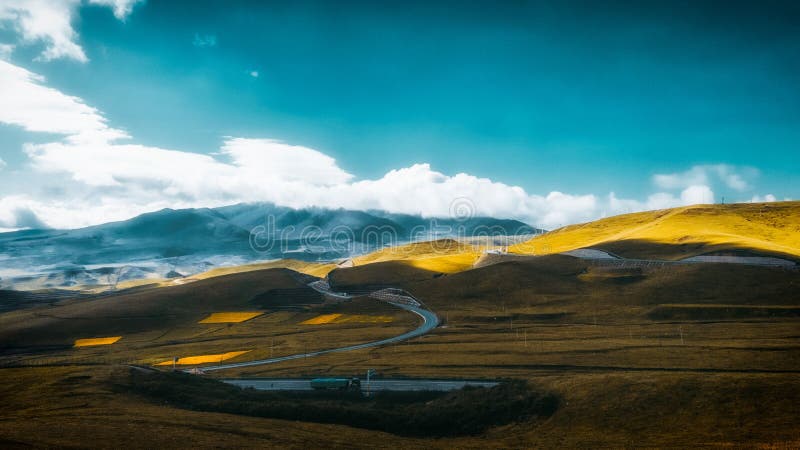
Riyue_Mountain.
Planning Your Visit: A Practical Guide
Visiting Riyue Mountain, also known as the Sun and Moon Mountains, promises an unforgettable experience filled with stunning landscapes, rich history, and unique cultural insights. This practical guide will help you plan your visit to this breathtaking destination in Qinghai Province.
Getting There
Riyue Mountain is conveniently located approximately 40 kilometers southwest of Wuyuan County, near Xining City. If you’re flying into China, your best bet is to land in Xining, the capital of Qinghai Province. From Xining, you can rent a car, take a taxi, or join a guided tour to reach the mountains. Self-driving allows for flexibility to explore the surrounding areas at your own pace, while guided tours can provide valuable insights and hassle-free travel.
Best Time to Visit
The ideal months to explore Riyue Mountain are from August to September, when the weather is generally mild and the scenery is at its most vibrant. However, if you’re keen to experience the serene beauty of the area during winter, be prepared for colder temperatures and a unique landscape.
Entrance Fees and Hours
Riyue Mountain is open daily from 7:00 AM to 7:00 PM. As of 2025, entrance tickets are reasonably priced, but it’s advisable to check for any updates or promotions before your visit. Having cash on hand is wise, as some areas may have unreliable network coverage for card payments.
What to See and Do
-
Historical Significance: The Riyue Mountains are steeped in legend, notably the story of Princess Wencheng of the Tang Dynasty, who is said to have broken her beloved stone mirror here. The fragments were believed to have become the two peaks of the mountains.
-
Scenic Views: Don’t miss the Ri Pavilion and Yue Pavilion, two iconic structures that offer panoramic views of the mountains and the surrounding landscape. These viewpoints are perfect for photography enthusiasts looking to capture the majestic scenery.
-
Hiking Opportunities: For adventure seekers, hiking trails abound in the area. Be sure to wear comfortable shoes for walking and exploring. The trails vary in difficulty, catering to both casual walkers and seasoned hikers.
-
Cultural Exploration: Engage with local traditions and culture. The region is home to several ethnic groups, and you may have the chance to witness or participate in local festivals or traditional practices.
Travel Essentials
-
Clothing: The temperature can vary significantly between day and night, so layering is key. Bring a mix of short and long-sleeved shirts, a warm jacket, and comfortable hiking pants. Don’t forget a sun hat and sunglasses, as the sun can be intense at higher altitudes.
-
Health and Safety: Due to the high altitude, it’s wise to carry some basic medications, especially if you’re prone to altitude sickness. Staying hydrated is essential, so bring water bottles that you can refill.
-
Electronics: A power bank is a must for keeping your devices charged, especially if you plan to take lots of photos. Also, consider a portable camera for capturing the stunning scenery.
Local Cuisine
While visiting, be sure to try local dishes such as Qinghai yogurt, hand-grabbed mutton, and roasted lamb ribs. These delicacies provide a true taste of the region and can often be found at local eateries or markets near Xining.
Conclusion
Riyue Mountain offers international travelers a unique blend of natural beauty, rich history, and cultural experiences. By planning ahead and preparing for the journey, you can make the most of your visit to this enchanting destination. Whether you’re hiking through the mountains, admiring the breathtaking views from the pavilions, or sampling delicious local cuisine, your adventure at Riyue Mountain will surely create lasting memories.
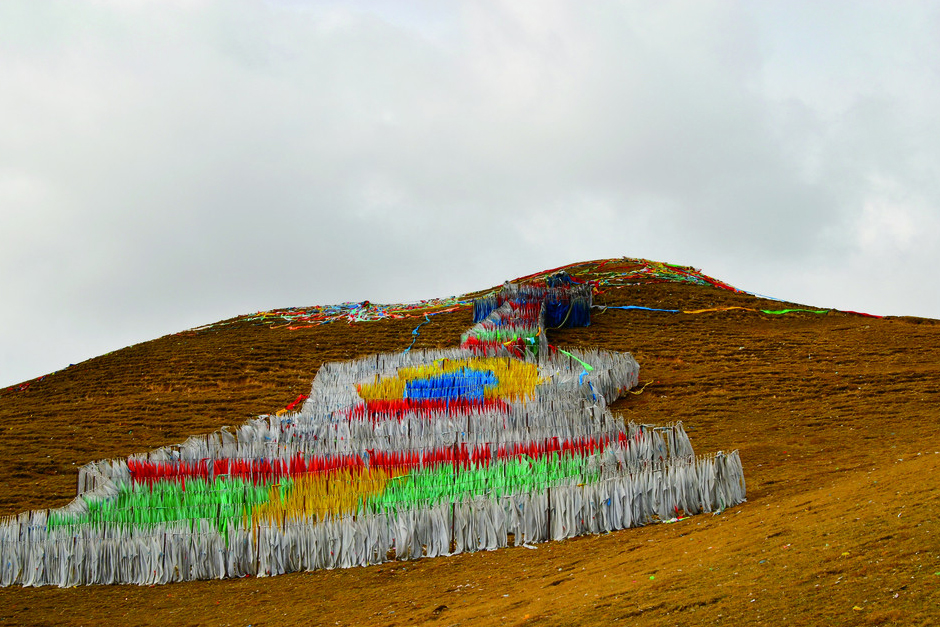
Riyue_Mountain.
Tickets: Prices, Booking, and Tips
When planning your visit to the stunning Riyue Mountain (日月山), it’s essential to know about ticket prices, booking options, and some handy tips to enhance your experience.
Ticket Prices
Entrance to Riyue Mountain is quite affordable, with tickets typically priced around ¥20-¥30 (approximately $3-$5 USD) per person. This nominal fee grants you access to breathtaking views and the rich historical significance of the area. Keep in mind that prices might vary slightly based on seasonal promotions or special events, so it’s wise to check for any updates closer to your visit.
Booking Options
Tickets can be purchased directly at the entrance, making it convenient for spontaneous travelers. However, if you prefer to plan ahead, consider booking through travel platforms like Trip.com or other local tour operators. This can be particularly useful during peak tourist seasons, as it may help you avoid long lines and guarantee your spot.
Opening Hours
Riyue Mountain is open to visitors from 7:00 AM to 7:00 PM. Early risers can enjoy a serene morning experience, while evening visitors will be rewarded with stunning sunset views over the plateau. Arriving early or later in the day not only provides a more peaceful atmosphere but also creates excellent opportunities for photography, especially with the changing light.
Tips for Your Visit
-
Dress in Layers: Weather conditions can change quickly in the mountains. While daytime temperatures in February may be warm, evenings can be quite chilly. Layering your clothing allows you to adapt to these changes comfortably.
-
Bring Sunscreen and Sunglasses: The sun’s rays are particularly intense at higher altitudes, so protect your skin and eyes from UV damage.
-
Stay Hydrated: The dry plateau climate can lead to dehydration. Carry water to keep yourself refreshed throughout your hike.
-
Capture the Moment: Don’t forget your camera or smartphone! The panoramic views and the unique formations of the Sun and Moon Mountains are photo-worthy at every angle.
-
Plan Your Itinerary: Riyue Mountain is often included in broader itineraries that explore Qinghai Lake and the Chaerhan Salt Lake. Consider planning a day trip that encompasses these beautiful sites for a comprehensive experience of the region.
Visiting Riyue Mountain promises an adventure filled with natural beauty and cultural depth. With the right preparations, you can truly enjoy this gem of Qinghai Province!
How to Get There: A Complete Transportation Guide
Reaching Riyue Mountain (日月山), also known as the Sun and Moon Mountains, is an adventure that begins in Xining, the capital city of Qinghai Province. This majestic mountain range, steeped in history and natural beauty, is conveniently located approximately 40 kilometers southwest of Wuyuan County in Xining. Here’s a comprehensive guide to ensure your journey to this stunning destination is as smooth as possible.
Getting to Xining
By Air
Xining Caojiabao Airport (XNN) is well-connected to several major cities in China, including Beijing, Shanghai, Chengdu, and Xi’an. International travelers may need to connect through larger airport hubs before arriving in Xining. Upon landing, you can easily access the city center via taxi or airport shuttle services.
By Train
Xining is also a major railway hub. High-speed trains from cities like Lanzhou, Beijing, and Xi’an arrive regularly. The train station is located in the city center, making it convenient to reach your accommodations or further transport options.
By Bus
For those who prefer a scenic route, long-distance buses operate from various cities in the region. Buses to Xining can be found at several bus stations around Qinghai Province, providing an economical option for budget travelers.
Traveling from Xining to Riyue Mountain
By Car
Driving to Riyue Mountain from Xining is a popular option for adventurous travelers. Rent a car from one of the numerous rental agencies in Xining. The drive takes about 1 hour, allowing you to enjoy the breathtaking landscape along the way. Follow the G109 highway southwest, and look for the signs directing you to Riyue Mountain.
By Taxi or Rideshare
If you prefer not to drive, you can hire a taxi or use a rideshare service. This option is convenient and allows for flexibility in your schedule. Ensure you negotiate the fare or confirm that the meter is running before you begin your journey.
By Tour Bus
Many local tour companies offer day trips to Riyue Mountain as part of larger itineraries. This is an excellent option for travelers who prefer a guided experience, as these tours often include knowledgeable guides who can provide insights into the rich history and culture of the area.
Local Transportation Options
Once you arrive at Riyue Mountain, you’ll find several local transportation options to help you explore the area:
-
Walking: The scenic areas around Riyue Mountain are best explored on foot. Walking allows you to fully appreciate the stunning views and unique features such as the Ri Pavilion and Yue Pavilion.
-
Bicycle Rentals: Some local shops offer bicycle rentals, providing a fun and eco-friendly way to navigate the area.
Essential Travel Tips
-
Timing Your Visit: Riyue Mountain is open daily from 7:00 AM to 7:00 PM. To avoid crowds and enjoy a quieter experience, consider visiting early in the day or later in the afternoon.
-
Weather Considerations: Due to the altitude, temperatures can vary significantly between day and night. Dress in layers and bring sun protection, as UV rays can be intense.
-
Cash on Hand: While some places may accept cards, it’s advisable to carry cash, especially for small purchases or local vendors.
With this transportation guide, you’re well-equipped to embark on your journey to Riyue Mountain. Whether you choose to drive, take a taxi, or join a guided tour, you’re in for a memorable experience amidst one of nature’s most beautiful showcases in Qinghai. Prepare to immerse yourself in the history and natural beauty of the Sun and Moon Mountains!
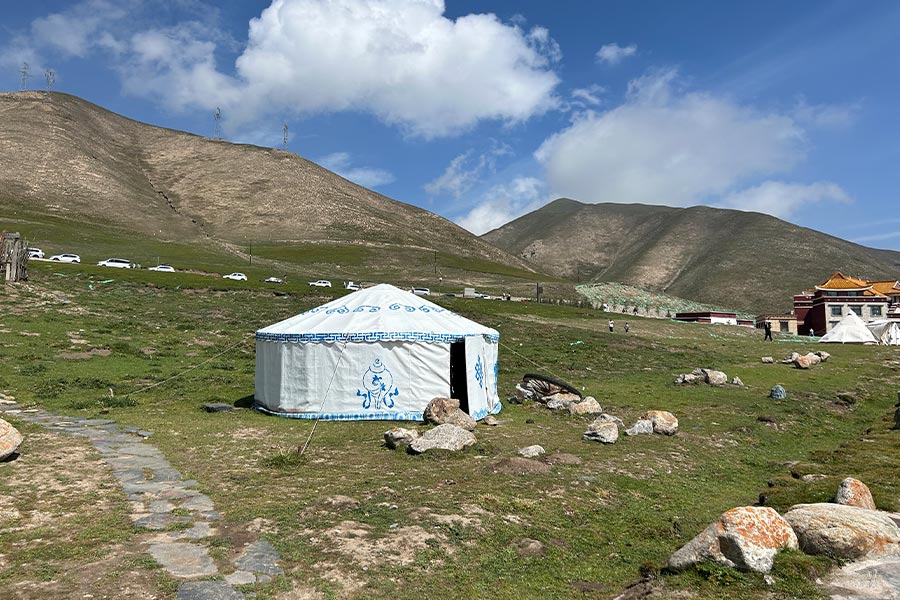
Riyue_Mountain.
Local Cuisine and Accommodation Nearby
Exploring the majestic Riyue Mountain isn’t just about the breathtaking views and historical significance; it’s also an opportunity to indulge in the rich flavors of Qinghai’s local cuisine and find comfortable accommodations nearby.
Local Delicacies to Savor
-
Qinghai Yogurt: Begin your culinary journey with this creamy delight, known for its rich texture and balanced sweetness. Enjoy it as a refreshing snack after your hike.
-
Hand-Grabbed Mutton: A staple of local cuisine, this tender and juicy dish is often seasoned to perfection. It’s a must-try for meat lovers and is usually enjoyed with flatbread.
-
Roasted Lamb Ribs: Crispy on the outside and succulent on the inside, these ribs come with a mouthwatering aroma that is hard to resist. Pair them with a local beer for the perfect meal.
-
Apricot Peel Tea: To quench your thirst, try this refreshing beverage made from apricot peels, renowned for its sweet, fruity flavor and invigorating qualities.
-
Baked Barley Bread: This traditional bread, often served alongside meals, is not only delicious but also carries the essence of the region’s agricultural heritage.
Where to Stay
1. Xining City Hotels
Located about 40 kilometers from Riyue Mountain, Xining offers a range of accommodations from budget hostels to comfortable hotels. The People’s Hotel of Xining and InterContinental Xining are excellent choices for travelers looking for modern amenities and easy access to local attractions.
2. Guesthouses Near Riyue Mountain
For a more intimate experience, consider staying at one of the guesthouses in Huangyuan County. Places like the Riyue Mountain Family Guesthouse offer cozy rooms and homemade meals, allowing you to immerse yourself in local culture.
3. Eco-Lodges and Campsites
Adventure seekers may prefer eco-lodges or campsites around Qinghai Lake, which is a short drive from Riyue Mountain. Qinghai Lake Eco Lodge provides stunning views and a unique opportunity to connect with nature.
4. Traditional Tibetan Inns
Experience the local culture by staying in a traditional Tibetan inn. These inns, such as Lhasa Inn, not only provide comfortable accommodations but also offer authentic Tibetan meals, making your stay even more memorable.
No matter where you choose to stay, the combination of delectable local food and cozy accommodations will enhance your visit to Riyue Mountain, allowing you to fully appreciate the beauty and culture of this remarkable region. Enjoy your journey!
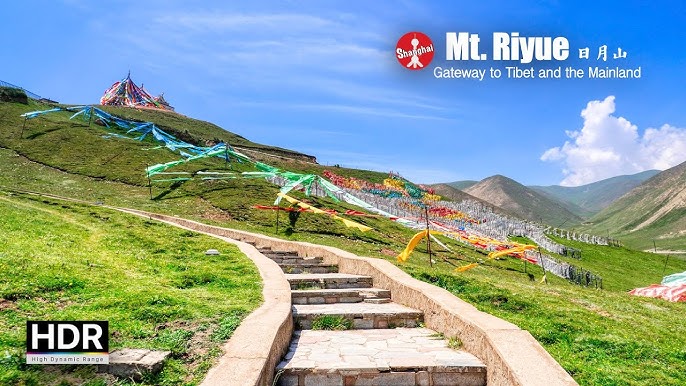
Riyue_Mountain.
Frequently Asked Questions
Frequently Asked Questions about Riyue Mountain
-
What are the opening hours for Riyue Mountain?
Riyue Mountain is open daily from 7:00 AM to 7:00 PM. It’s a good idea to arrive early to enjoy the stunning views and avoid crowds. -
How do I get to Riyue Mountain from Xining?
Riyue Mountain is located approximately 40 kilometers southwest of Xining. You can reach it by car, taxi, or bus. If you’re driving, the scenic route offers breathtaking views, making the journey a part of the experience. -
What is the best time to visit Riyue Mountain?
The best time to visit Riyue Mountain is during the spring and summer months (April to October) when the weather is mild, and the scenery is at its most vibrant. However, if you enjoy winter landscapes, visiting in late autumn or winter can offer a tranquil and unique atmosphere. -
Are there any entrance fees for visiting Riyue Mountain?
Yes, there is an entrance fee to access Riyue Mountain. It’s advisable to check for the latest ticket prices and any potential discounts online before your visit. -
What should I wear when visiting Riyue Mountain?
Due to significant temperature variations between day and night, it’s recommended to dress in layers. Wear comfortable hiking shoes, and bring a jacket for cooler temperatures, especially if you plan to visit in the early morning or late evening. -
Is there any food or accommodation available near Riyue Mountain?
While there are no hotels directly on Riyue Mountain, there are accommodations available in nearby Xining. You can find local restaurants and food stalls offering traditional Qinghai cuisine, such as hand-grabbed mutton and yogurt, both of which are highly recommended. -
What are the must-see attractions at Riyue Mountain?
Don’t miss the iconic Ri Pavilion and Yue Pavilion, which provide stunning panoramic views of the surrounding landscape. The story of Princess Wencheng and the legend behind the mountain adds a cultural richness to your visit. -
What should I prepare for a visit to Riyue Mountain?
Be sure to pack essentials such as sunscreen, sunglasses, a hat for sun protection, a power bank for your devices, and your ID for any potential discounts. It’s also wise to carry cash, as some places may not accept cards.
Final Thoughts on Your Trip
As you wrap up your journey through the stunning landscapes of the Riyue Mountains, take a moment to reflect on the myriad experiences that have unfolded before you. From the breathtaking vistas that stretch across the horizon to the rich tapestry of history woven into every rock and peak, the Sun and Moon Mountains offer an enchanting escape from the ordinary.
This is more than just a destination; it’s a place where legends linger in the air, where the beauty of nature harmonizes with stories of the past. Whether you found solace in the serene surroundings, marveled at the unique geological formations, or embraced the vibrant culture of the region, your time here will undoubtedly leave an indelible mark on your heart.
As your adventure draws to a close, carry with you the memories of the majestic peaks, the whispers of ancient tales, and the friendships forged along the way. Let the spirit of the Riyue Mountains inspire your future travels, reminding you that the world is filled with wonders waiting to be explored. Until next time, may your journeys be filled with awe, excitement, and discovery. Safe travels!